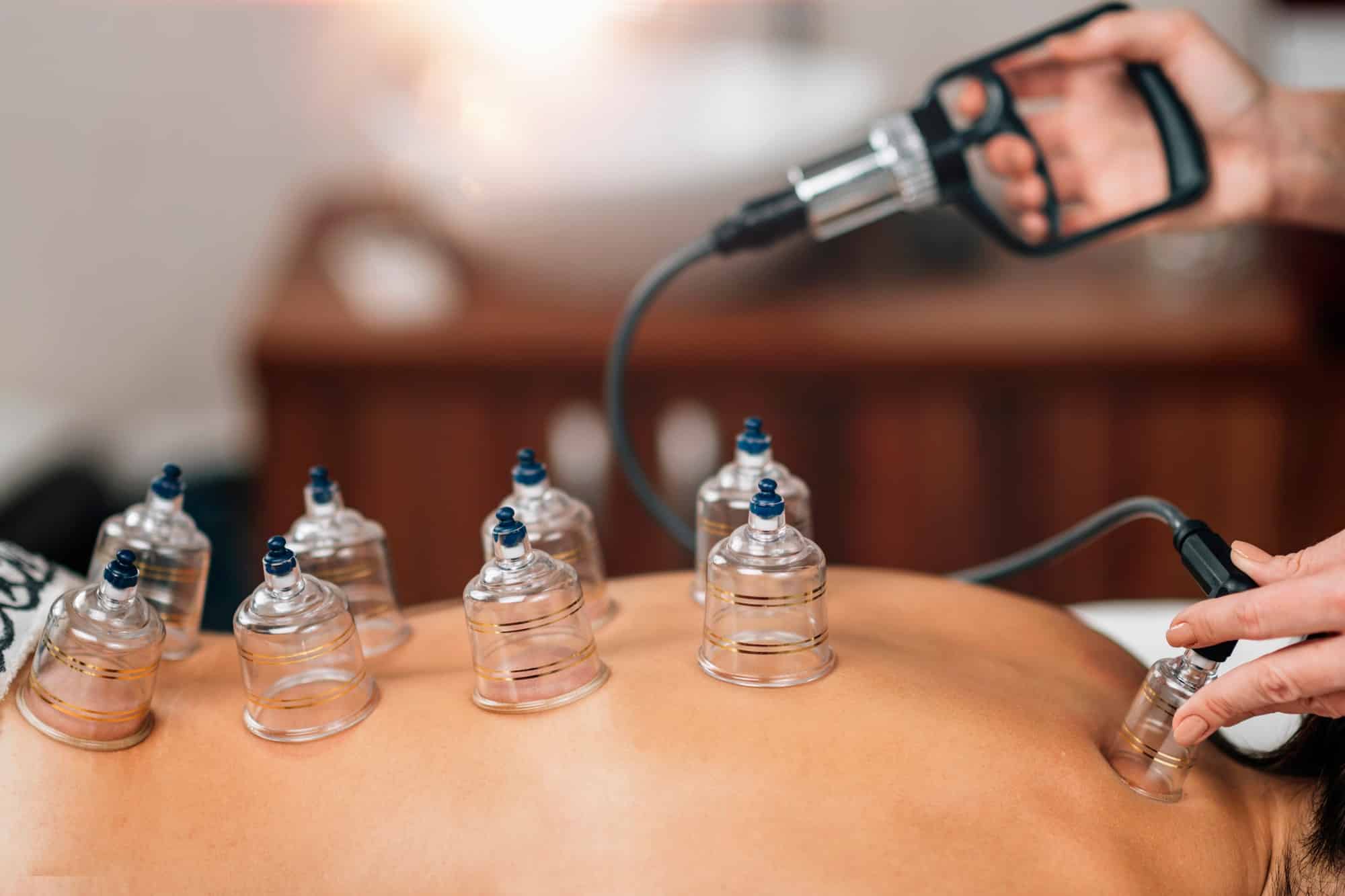Cupping Pain Relief

Description
Cupping therapy is a Chinese medicine technique in which suction cups are placed on the skin to mobilize blood flow, reduce pain, and promote healing. Even though cupping has been practiced in ancient Egypt and in China since 1000BC, most Americans first learned about it while watching the 2008 Summer Olympics, noting the large circular marks on the backs of Chinese swimmers. Most recently, at the 2016 Olympics in Rio, Michael Phelps made a splash with his own cup marks.
By creating suction and negative pressure, cupping therapy is used to soften tight muscles and tone attachments, loosen adhesions and lift connective tissue, bring hydration and blood flow to body tissues, and drain excess fluids and toxins by opening lymphatic pathways. Cupping is versatile and can be modified to accomplish a range of techniques from lymphatic drainage to deep tissue release.
Cupping is extremely effective as a natural back pain treatment, neck pain treatment, shoulder pain treatment, as well as sciatica treatment (Cao, 2012). Further, ongoing studies show that this ancient practice is a promising natural treatment for shingles (herpes zoster), facial paralysis (Bell palsy), cough and dyspnea, acne, lumbar disc herniation, and cervical spondylosis (Kim, 2011). Unlike conventional pain medications, cupping has no side effects, except for the tell-tale purple marks of this highly effective pain treatment.
Clinical Applications
- Neck & Back Pain
- Shoulder Pain
- Sciatica/Leg Pain
- Disc Herniation
- Headaches
Benefits
- Relieve Muscular Tension
- Increase Blood Flow to Tissue
- Drain Fluid & Toxins via the Lymphatic System
- Reduce Pain
- Promote Healing
Book Appointment
Interested in becoming a patient?
Complete the intake form below.
FAQ
Frequently Ask Questions.
While everyone’s pain tolerance is different, cupping is usually not painful and the level of intensity could be compared to a deep tissue massage
During cupping a negative pressure is created and the skin is pulled up within the cup. This causes capillary expansion (increased blood flow to tissue) and sometimes bursting which creates the circular bruise.
Cupping is used for a wide variety of conditions that include but are not limited to muscle strain/sprains, cervical and lumbar disc herniations, fibromyalgia, sciatica, osteoarthritis, carpal tunnel syndrome, golfer’s or tennis elbow, scar tissue, as well as alleviating headaches and migraines
Yes, cupping should not be performed over recent or open wounds, rashes, varicose veins, or burns
Cupping Pain Relief
Unlike conventional pain medications, cupping has no side effects, except for the tell-tale purple marks of this highly effective pain treatment.
Cupping Pain Relief
What is The Cupping?
Cupping therapy is a Chinese medicine technique in which suction cups are placed on the skin to mobilize blood flow, reduce pain, and promote healing. Even though cupping has been practiced in ancient Egypt and in China since 1000BC, most Americans first learned about it while watching the 2008 Summer Olympics, noting the large circular marks on the backs of Chinese swimmers. Most recently, at the 2016 Olympics in Rio, Michael Phelps made a splash with his own cup marks.
By creating suction and negative pressure, cupping therapy is used to soften tight muscles and tone attachments, loosen adhesions and lift connective tissue bring hydration and blood flow to body tissues, and drain excess fluids and toxins by opening lymphatic pathways. Cupping is versatile and can be modified to accomplish a range of techniques from lymphatic drainage to deep tissue release.
Cupping is extremely effective as a natural back pain treatment, neck pain treatment, shoulder pain treatment, as well as sciatica treatment (Cao, 2012). Further, ongoing studies show that this ancient practice is a promising natural treatment for shingles (herpes zoster), facial paralysis (Bell palsy), cough and dyspnea, acne, lumbar disc herniation, and cervical spondylosis (Kim, 2011). Unlike conventional pain medications, cupping has no side effects, except for the tell-tale purple marks of this highly effective pain treatment.
